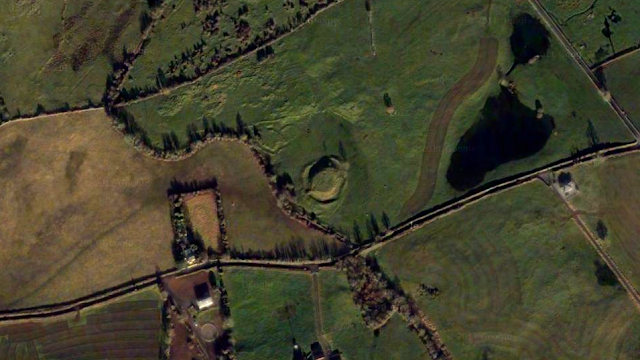Clare's Quin Abbey, Among Ireland's Hidden Sacred Ground
Throughout Ireland's lovely and storied countryside, visitors can find magnificent religious sites that are a testament to Ireland's glorious and tragic history. Some of the best known include the Rock of Cashel, St. Kevin's Monastery at Glendalough, and the ancient university of Clonmacnoise.
But in addition to these notable locations, there are numerous ruins of abbeys, monasteries and churches that are not on the tourist maps and little visited. The most chesished in my memory is Quin Abbey, which I came upon quite accidentally on one of my first trips to Ireland.
Qunn Abbey in County Clare is almost in the shadow of Shannon Airport but is little known and less visited. I came upon the abbey while seeking a direct road to the nearby Cliffs of Moher, one of Ireland's most popular scenic wonders. With no one around, I climbed over a stone wall and spent several hours exploring the ruins of the abbey and its somber graveyard.
The Franciscan friary dates from the 15th century when the MacNamara family built the cloisters on the remains of a Norman castle. The abbey was confiscated from the Franciscans in 1541 after England's Henry VIII suppressed the Catholic Church. For decades, the site was in disrepair until the MacNamaras regained control and restored the grounds in 1604. But in 1651 Cromwell's troops destroyed the abbey again, and massacred the friars.
In 1691, the friars returned and there was a Franciscan presence until 1820, when the last friar living on the ruined grounds died. The abbey was declared a National Monument in 1880.
I have visited Quin Abbey several times and have always marveled at its quiet dignity. Although officially there is caretaker on the site, perhaps because I usually visit Ireland "off season," I have never encounterd one. I have read reviews on Tripadvisor.com in which visitors, who also came upon the landmark accidentally, have found the caretaker's recitation of the abbey's history helpful. But although I would no doubt benefit from this knowledge, something in me prefers visiting Quin Abbey when no one else is around, when I can walk among the ruins and try to imagine what is was like in its era of spiritual activity. It is something that I, for one, find inspiring in today's secular world.
Something in me prefers visiting Quin Abbey when no one else is around, when I can walk among the ruins
Quin Abbey is nine miles from the town of Ennis in County Clare and there are directional signs on local roads. In the Franciscan spirit, there is no charge for entering the grounds. There is a bar / restaurant across the street that has received favorable reviews for lunch and a Catholic church nearby that serves the village.
In addition to Quin Abbey, some other religious sites that are off the beaten track are Timoleague Friary near Kinsale, County Cork, and Holy Cross Abbey in Tipperary, The latter is one of the few ancient religious sites in Ireland restored completely as a parish church.
For more information on visiting Ireland, contact the Irish Tourist Board at www.discoverireland.ie.
-
Comment by Kieron Punch on August 10, 2015 at 4:22am
-
If anyone should decide to visit Quin Abbey on the strength of Michael's fine description, it would be a shame if you did not also visit nearby Magh Adhair, which is the site where the Dalcassian Kings of Thomond were inaugurated. Take the narrow, winding road that leads to the north-east from the village of Quin towards Tulla. About 2.5 miles from Quin the road crosses a stone bridge over a small stream called the Hell River, and immediately on the left (north of the road) is the mound of Magh Adair, which can be accessed from the road by a stile. There is no parking at this historic site and the road is only wide enough for one car, but it is also a very quiet road so it is probably safe enough to pull onto the verge and hop over the wall into the field for a few minutes - which is all it will take to explore the mound.
The inauguration mound is visible in the middle of this photo

-
Comment by Michael Quane on August 10, 2015 at 5:32am
-
Thanks for that, Kieron. There are so many fascinating historical sites to discover in Ireland if one is willing to go beyond the well-trod tourist trails.
-
Comment by Ronan McDonnell on September 28, 2016 at 4:21am
Comment
- ‹ Previous
- 1
- 2
- Next ›
The Wild Geese Shop
Get your Wild Geese merch here ... shirts, hats, sweatshirts, mugs, and more at The Wild Geese Shop.
Irish Heritage Partnership
Adverts
Extend your reach with The Wild Geese Irish Heritage Partnership.
Top Content
Videos
© 2025 Created by Gerry Regan.
Powered by
![]()
Badges | Report an Issue | Privacy Policy | Terms of Service
You need to be a member of The Wild Geese to add comments!
Join The Wild Geese